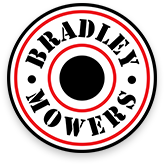Lawn Mower sulkies act as vital attachments for mowing equipment as they allow for increased functionality and utility. A sulky attachment converts the usual mower into a riding mower, vastly reducing the legwork required for the job. These sulkies make lawn work easier and more tolerable for the individual. This article gives an insightful look at the different types of lawn mower sulkies and what they entail.
Single-Wheel Sulkies
Single-wheel sulkies adopt a very simplified design without cutting back on functionality. Their nature makes them a top consideration for many lawn mowing jobs. The single wheel is ideally located under the standing platform at the center. The sulky is fitted with an arm connected to the mower to allow comfortable mowing jobs. It would be commendable to use these sulkies when working on even terrain. If you're standing on the platform, you may lose your balance on jobs in uneven fields due to the rugged terrain, exposing yourself to injury. These sulkies are believed to cause soil compaction, given the amount of pressure applied on the ground by the weighted wheel. Single-wheel sulkies are easy to maintain, due to their simple setup.
Double-Wheel Sulkies
As the name suggests, double-wheel sulkies are fitted with two wheels. The additional wheel is meant to reduce the effects of a weighted wheel on the soil in your lawn. Too much weight leads to compaction, which may discourage even and regular grass growth for that aesthetically pleasing lawn. Many professional mowing services prefer this sulky, given its increased utility. The wheel set up on this sulky has them placed on both sides of the equipment. This setup gets rid of the dark compaction lines that are likely to occur with the use of a single-wheel sulky. The size of the sulky’s wheel base will have a direct bearing on the size and impact of these lines. Double-wheel sulkies are less likely to cause injury during use due to increased stability. They are also easier to use on uneven and rugged terrain. However, maintenance for these sulkies may be slightly more costly than single-wheel sulkies.
Platform-Style Sulkies
The platform-style sulky adopts an innovative application to the lawnmower. Instead of the usual wheels, the lawnmower is fitted with a standing platform, in some cases retractable, on which the user can stand. This platform is designed to be flat and well centered for good balance. This design has numerous benefits, adding to the sulky’s utility. The absence of wheels eliminates the need to fix flat tires, which can use up valuable time and money. It also eliminates the need to service and repair worn-out bearings. It keeps the user safe from jackknifing and reduces the impact of shaking. Having no wheels means that the grass remains undisturbed, and no compaction lines are drawn during mowing.
Ultimately, your specific needs and applications will determine the best sulky option for you. Each sulky has its benefits and utility, as seen above.
